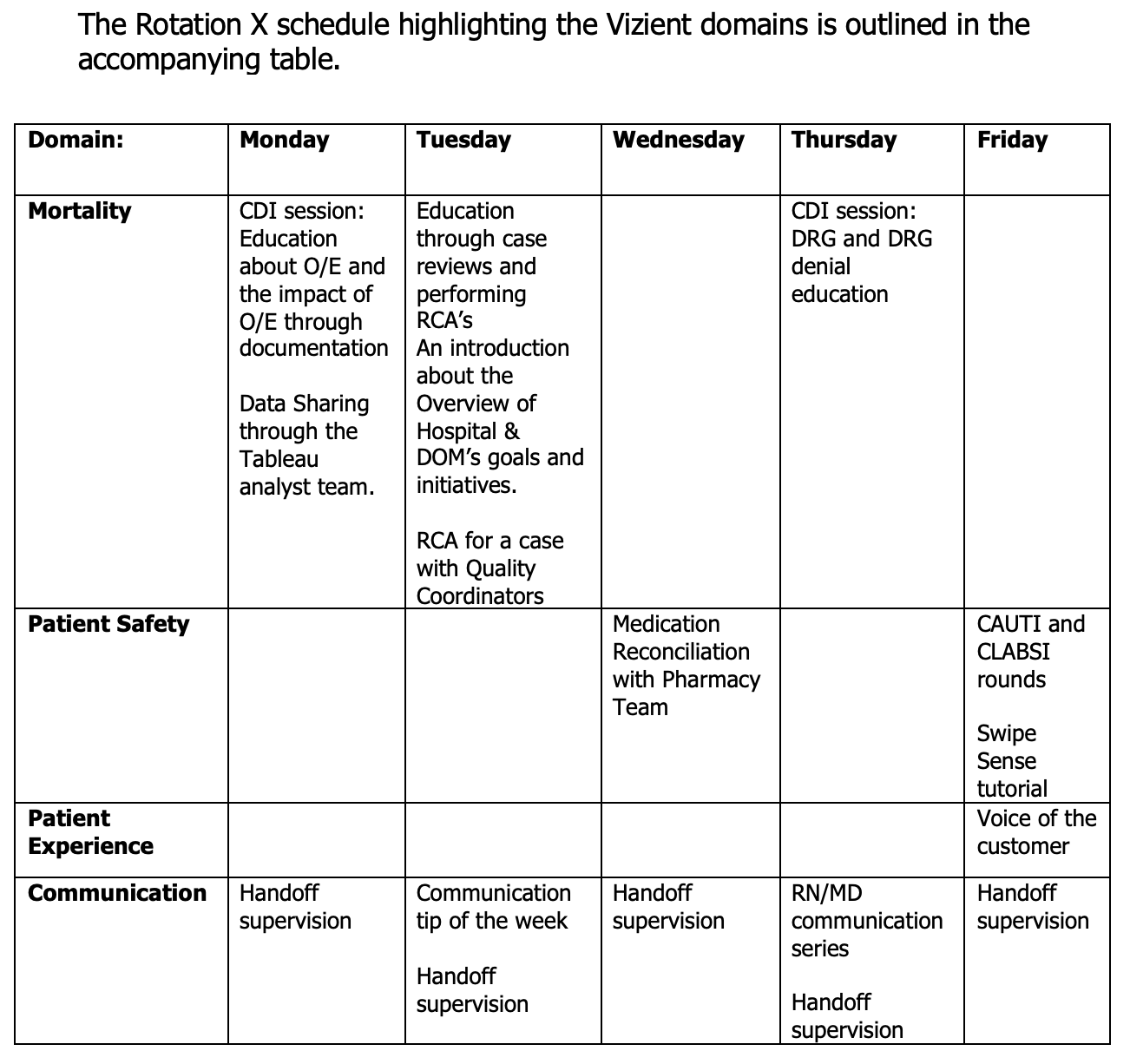Background: The Vizient Quality and Accountability scorecard is a tool that measures academic medical centers (AMCs) clinical performance, focusing on quality and safety while targeting specific opportunities for improvement. The Vizient quality domains include Mortality, Efficiency, Effectiveness, Equity, Patient Experience, and Patient safety. In an academic setting, the frontline healthcare providers are resident physicians. As per the ACGME, all residency programs must integrate a curriculum with patient safety and quality improvement initiatives to improve the quality of care and service provided. We developed a quality rotation (Rotation X) to align our institutional and departmental quality initiatives within our residency program.
Purpose: This is a symbiotic approach for fortifying our residents’ skillsets while aligning with institutional and national quality improvement metrics benefiting the healthcare system.
Description: Mortality Domain: A session with our departmental QI team walks the residents through our departmental quality goals. They review our patient safety indicators (PSI) and our organizational scoreboard. The residents are then introduced to a Root Cause Analysis and tasked with creating an RCA of their own. They are introduced to the Observed/Expected Mortality index which demonstrates that their documentation can directly impact the mortality ratio assigned to their patients. They also have an introduction to diagnosis-related groups (DRG) and DRG denials.Our clinical practice analysis team (tableau) introduces residents to Vizient star rating as they review indicators that comprise the Vizient mortality index score and the six domains of care.In the Patient safety domain, residents collaborate with the pharmacy team to review medication reconciliation, hospital policy, and pharmacy resources. Residents are introduced to CAUTI and CLABSIs by infection control. The residents will round on team patients with an effort to remove unnecessary lines.A session to align with the AHA’s Get with The Guidelines provides a presentation on the pathophysiology of HF, clinical presentation, workup, and goal-directed medical therapy. For residents to engage in the patient experience domain, we developed a session named Voice of the Customer where residents interview patients approaching discharge. This functions as an introduction to the Hospital Consumer Assessment of Healthcare Providers and Systems (HCAHPS) survey and highlights residents’ as key stakeholders in supporting our patient experience. Breakdowns in communication are one of the most common components of any patient safety and quality issues. We created an RN/MD communication series. Scenarios focus on bridging the gaps between RN/MD communication. The rotation also enlists the PGY 3 resident to supervise the daily shift hand-off between the PGY 1 residents.
Conclusions: All involved with this rotation have been reporting an appreciation for the comprehensive approach to this quality and patient safety curriculum. We feel that the development of such an innovative rotation in other institutions would strengthen the educational competencies set forth by the GME as well as prepare residents to provide the highest level of care with a continuous focus on patient safety, quality improvement, teamwork, and compassion. We have seen a strengthened engagement with the residents which catalyzes resident-led QI projects.

